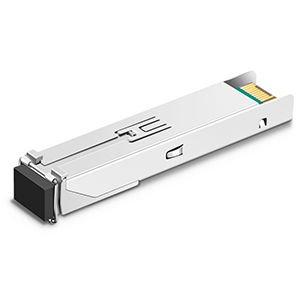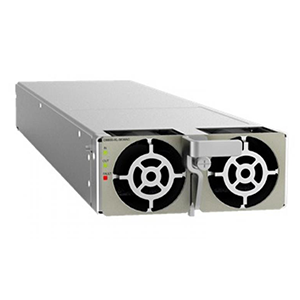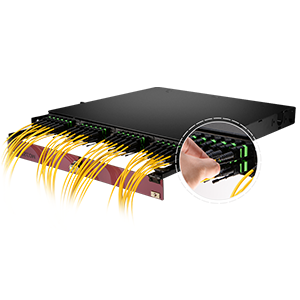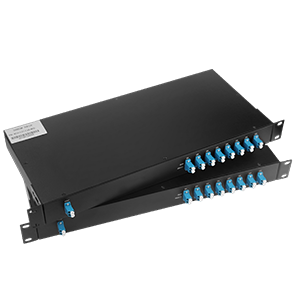Fibre-to-the-home (FTTH) technology undoubtedly plays a pivotal role in the field of broadband access. This article will focus on the characteristics of SFP ONU as a key component of FTTH. We will first define the basic concepts of SFP ONU, including its physical structure and functional positioning in the FTTH system. We will deeply explain the working principle of SFP ONU and analyze the role of its internal optical transceiver, MAC and other modules.
At the same time, we will also introduce the main performance indicators of SFP ONU and compare it with other FTTH terminal equipment. In addition, we will list the typical applications of SFP ONU in homes, enterprises and other scenarios, and explain the technical and business factors that need to be considered during deployment. Finally, we will guide you on how to select SFP ONU according to actual needs, and introduce the correct installation and debugging methods.

Basic concepts of SFP ONU
Let me introduce you to the basic concept of SFP ONU: SFP ONU is a small optical fiber network unit that uses SFP optical module to receive and send optical signals. SFP ONU are commonly used for fiber optic broadband access in homes and businesses. The advantages of SFP ONU are small size, low power consumption, and easy installation and maintenance.
Physical structure and interface standards of SFP ONU:
- SFP ONU is a small and detachable optical network unit (Optical Network Unit).
- It adopts SFP (Small Form-factor Pluggable) standard physical dimensions, that is, about 50mm in length, 14mm in width, and 8-12mm in thickness.
- SFP ONU integrates optical reception, optical transmission, signal processing and other functional modules.
- It provides standard optical fiber interfaces (LC/SC, etc.) and electrical interfaces (RJ-45, USB, etc.), which can be plugged into the corresponding device slot for use.
Functional positioning of SFP ONU in FTTH system:
1. Terminal access equipment:
- SFP ONU, as a terminal access device in the FTTH (Fiber To The Home) system, is installed inside the user’s home or building.
- It is responsible for connecting the optical fiber network to user terminal devices, such as routers, TV set-top boxes, etc.
2. Photoelectric conversion and signal processing:
- The SFP ONU integrates a photoelectric conversion module, which can convert between optical signals and electrical signals.
- It also contains a signal processing circuit, which can encode, decode, modulate and process the received and sent data.
3. Network interface adaptation:
- SFP ONU provides a standard Ethernet electrical interface (RJ-45) to facilitate connection to user terminal equipment.
- At the same time, it can also provide other common interface types such as USB and HDMI to meet the access needs of different devices.
4.Power supply:
- SFP ONU usually uses external power supply and can obtain power from optical fiber lines or local power sources.
- In a few cases, power can also be supplied via electrical signal line power supply (POE).
From the above, we can easily see that SFP ONU is an important part of the FTTH system. It connects the optical fiber network to user terminal equipment, realizes photoelectric conversion and signal processing, and is the key to realizing fiber to the home.
What is the working principle of SFP ONU
Let me introduce to you the working principle of SFP ONU in detail: The working principle of SFP ONU is: it uses SFP optical module to receive and send optical signals. The SFP optical module converts optical signals into electrical signals, which are then processed by the ONU. The ONU converts electrical signals into optical signals, which are then sent out by the SFP optical module.
SFP ONU optical signal transceiver and processing:
1. Optical signal reception:
- SFP ONU receives downlink optical signals from the optical line network through the optical fiber interface.
- The internal optical receiver module converts optical signals into electrical signals and performs amplification, filtering and other processing.
- After the decoding, demodulation and other processes of the physical layer and MAC layer, digital data information is finally obtained.
2. Optical signal transmission:
- The digital data information sent by the user terminal equipment will undergo encoding, modulation and other processing within the SFP ONU.
- The optical transmitter module converts electrical signals into optical signals and couples them to optical fiber lines for uplink transmission.
- Parameters such as transmit power and wavelength will be controlled within the range required by the optical network.
3. Terminal adaptation and processing:
- SFP ONU provides a standard Ethernet interface (RJ-45) to connect to user terminal equipment.
- Adapt the access requirements of different terminal devices through data link control at the MAC layer.
- It can also provide advanced functions such as VLAN and QoS to meet differentiated business needs.
The role of SFP ONU internal modules:
1. Optical transceiver module:
- Responsible for converting optical signals into electrical signals and vice versa.
- Including light receiving devices, light emitting devices and related driving circuits.
2. Physical layer module:
- Realize basic functions such as physical layer encoding, decoding, modulation and demodulation.
- Ensure compliance with the technical standards and transmission characteristics requirements of optical networks.
3.MAC layer module:
- Provides control and management functions of the data link layer.
- Including address management, frame formatting, error checking, etc.
4.Business processing module:
- Provide advanced functions such as VLAN and QoS according to user needs.
- Realize intelligent scheduling and priority control of business traffic.
So, SFP ONU realizes the transmission and reception of optical signals, terminal adaptation and business processing through the collaborative work of multiple functional modules such as optical transceiver, physical layer, MAC layer and business processing, and is the key to the user side in the FTTH system. equipment.
What are the main features of SFP ONU
Let me introduce to you the main performance features of SFP ONU in detail: The main features of SFP ONU include: supporting multiple SFP optical modules, supporting multiple rates, supporting multiple protocols, supporting multiple management methods, etc. SFP ONU can choose different SFP optical modules according to different needs to meet different transmission distance and rate requirements. SFP ONU can support multiple rates, such as 100M, 1G, 10G, etc. SFP ONU can support multiple protocols, such as GPON, EPON, 10G EPON, etc. SFP ONU can support multiple management methods, such as SNMP, WEB, CLI, etc.
What are the performance indicators of SFP ONU:
1.Transmission rate:
- SFP ONU usually supports Ethernet transmission rates of 1Gbps, 2.5Gbps or even 10Gbps.
- This high-speed transmission capability meets users’ growing demand for bandwidth.
2. Power consumption:
- SFP ONU is a small plug-in device, and its power consumption is generally around 3-5W.
- Low power consumption enables easy deployment in user environments.
3. Size:
- The SFP ONU adopts the SFP standard compact package, with a size of approximately 50x14x8-12mm.
- The compact size is easy to install and deploy, and can be integrated into user equipment.
4.Interface:
- Provides optical fiber interface LC/SC) and electrical interface RJ-45, USB, etc.).
- Flexible interface types meet the access needs of different user equipment.
5. Environmental adaptability:
- SFP ONU has good temperature and humidity adaptability and can work at -40~+85℃.
- Sturdy packaging design, able to withstand harsh environments such as shock, moisture, and dust.
Differences between SFP ONU and other FTTH terminal equipment:
1. Differences from rack-mounted ONU:
- SFP ONU is more compact, detachable, and more flexible in deployment.
- Rack-mounted ONUs generally carry the access needs of more users.
2. Differences from Optical Cat ONT):
- SFP ONU only provides photoelectric conversion and network interface functions.
- Optical modem integrates router, WIFI and other functions to provide users with a more complete solution.
3. Differences from PON equipment:
- SFP ONU is a terminal device in passive optical network (PON).
- PON equipment also includes network side equipment such as OLT and optical splitter.
Based on the above, SFP ONU plays a unique role in FTTH systems with its compact packaging, flexible interfaces, low power consumption and other characteristics, meeting users’ needs for high-speed, compact, and easy-to-deploy optical network access.
How to deploy applications on SFP ONU
Let me introduce to you the typical applications of SFP ONU in different scenarios and the factors that need to be considered during deployment: SFP ONU is mainly used for fiber-optic broadband access in homes and enterprises. SFP ONU can be deployed in FTTH, FTTB, FTTC and other networks. SFP ONU can be used in conjunction with OLT to achieve fiber broadband access. SFP ONU can provide high-speed, high-reliability optical fiber broadband services.
Application of SFP ONU in different scenarios:
1. Home application:
- SFP ONU can be installed directly inside the home optical modem or router device.
- Provide high-speed broadband access and IPTV, VoIP and other services for home users.
2. Enterprise applications:
- SFP ONU can be integrated into the SFP/GBIC slot of an enterprise switch or router.
- Provide high-bandwidth optical fiber access for enterprise networks to meet business application needs.
3. Hotel/apartment application:
- SFP ONU can be installed on access equipment in hotel rooms or apartments.
- Provide residents with services such as high-speed Internet access and IPTV to meet the needs of guests.
4.Industrial/outdoor applications:
- SFP ONU can be installed on industrial control equipment or access equipment in outdoor environments.
- With its rugged design, it can adapt to industrial sites or harsh outdoor environments.
Factors to consider when deploying SFP ONU:
1. Technical factors:
- The coverage and bandwidth capabilities of the optical fiber network ensure that SFP ONU can be accessed.
- Whether the user equipment has an SFP/GBIC card slot or external interface to facilitate SFP ONU installation.
- Power supply and heat dissipation requirements ensure that the SFP ONU can operate stably.
2. Business factors:
- User demand for bandwidth and service quality determines the performance selection of SFP ONU.
- Deployment costs and operation and maintenance costs weigh the economics of SFP ONU and other terminal equipment.
- The impact of service providers’ business strategies, such as bundled sales, leasing and other business models.
In short, with its compact design and flexible interface, SFP ONU can be widely used in various scenarios such as homes, enterprises, hotels, etc., providing users with high-speed and stable optical fiber access services. During specific deployment, technical and commercial factors need to be fully considered to ensure that SFP ONU can maximize its value.
How to select and configure SFP ONU
Let me introduce to you the selection and configuration method of SFP ONU: The selection of SFP ONU needs to consider the following factors: transmission distance, rate, protocol, management method, etc. The configuration of SFP ONU needs to be carried out according to the actual situation, such as the selection of SFP optical modules, rate configuration, protocol configuration, etc. SFP ONU selection and configuration requires professionals.
Key parameter selection of SFP ONU:
1.Transmission rate:
- Based on the user’s current andFor future bandwidth requirements, choose SFP ONUs with different rates such as 1G, 2.5G or 10G.
- For home users, 1G speed can usually meet the needs; enterprise users can choose higher speeds.
2. Optical interface type:
- According to the optical interface type of the OLT or other equipment on the network side, select the matching LC or SC optical interface.
- Also consider the compatibility of fiber types (single mode/multimode).
3. Electrical interface:
- According to the network interface type of the user equipment, select an appropriate electrical interface such as RJ-45 Ethernet or USB.
- Some SFP ONUs also provide other interfaces such as HDMI and VoIP to meet richer application requirements.
4.Working environment:
- According to the deployment environment of the SFP ONU, select a model with appropriate temperature, humidity, dustproof and waterproof levels.
- For harsh industrial or outdoor environments, you need to choose a more rugged and durable SFP ONU.
Correct installation and debugging method of SFP ONU:
1. Installation steps:
- Insert the SFP ONU into the corresponding SFP/GBIC slot of the user equipment, paying attention to the direction.
- Use LC/SC optical fiber to connect the optical interface of the SFP ONU to the OLT or other equipment on the network side.
- Connect the power supply and make sure the power indicator light of the SFP ONU is on.
2.Initial configuration:
- Log in to the management interface of the user device and find the configuration options of the SFP ONU.
- Configure the MAC address, VLAN, QoS and other parameters of the SFP ONU according to the requirements of the network side.
- Ensure that the SFP ONU can register to the optical fiber access network normally.
3.Performance check:
- Check the physical layer indicators such as optical power and optical signal quality of the SFP ONU.
- Test performance indicators such as network speed, delay, and packet loss rate to ensure that requirements are met.
- Long-term monitoring of the operating status of SFP ONU to detect and solve problems in a timely manner.
The selection and configuration of SFP ONU requires comprehensive consideration of user needs, network environment and other factors, selecting appropriate key parameters, and following correct steps for installation and debugging to ensure that the SFP ONU can work stably and efficiently.
Summary
As an indispensable component of the FTTH system, SFP ONU performance and reliability directly affect the transmission quality of the entire network. Our company has long been focused on the R&D and production of SFP ONUs and related products, and has rich industry experience. Our SFP ONU not only reaches the industry-leading level in key parameters such as transmission rate, power consumption, and size, but also has excellent performance in terms of compatibility and ease of deployment.
No matter what your FTTH network application scenario is, we can provide you with customized SFP ONU solutions. At the same time, our professional team will provide you with comprehensive technical support and deployment guidance to ensure that your SFP ONU can operate stably and efficiently. Contact us now to learn more about our company’s SFP ONU product line and related services.
SFP ONU FAQ
The SFP ONU converts optical signals received from the fiber optic network into electrical signals that can be processed by the connected equipment, and vice versa for upstream transmission.
Typical components include a optical transceiver, control and interface circuitry, and a mechanical housing that conforms to the SFP form factor.
SFP ONUs typically support functions like auto-negotiation, wavelength-division multiplexing (WDM), and power management, depending on the specific model and manufacturer.
SFP ONUs can vary in terms of supported fiber types (single-mode, multimode), wavelengths, and data rates, with options for Gigabit Ethernet, 10 Gigabit Ethernet, and higher-speed interfaces.
The SFP ONU connects to the fiber optic network on one side and the customer premises equipment (CPE) or network switch on the other side, enabling the delivery of broadband services.
Key advantages include modularity, scalability, reduced space requirements, and simplified installation and maintenance compared to traditional ONU designs.
SFP ONUs are designed to have low power consumption and often incorporate thermal management features to ensure reliable operation in various environments.
SFP ONUs must adhere to industry standards, such as those from the SFF Committee and IEEE, to ensure compatibility with the broader network infrastructure.
Ongoing advancements include the integration of additional functionalities, increased data rates, and the development of enhanced power-saving and cooling mechanisms.
An SFP ONU is a type of optical network unit (ONU) that is designed in the small form-factor pluggable (SFP) module format, allowing it to be easily installed and integrated into network equipment.





